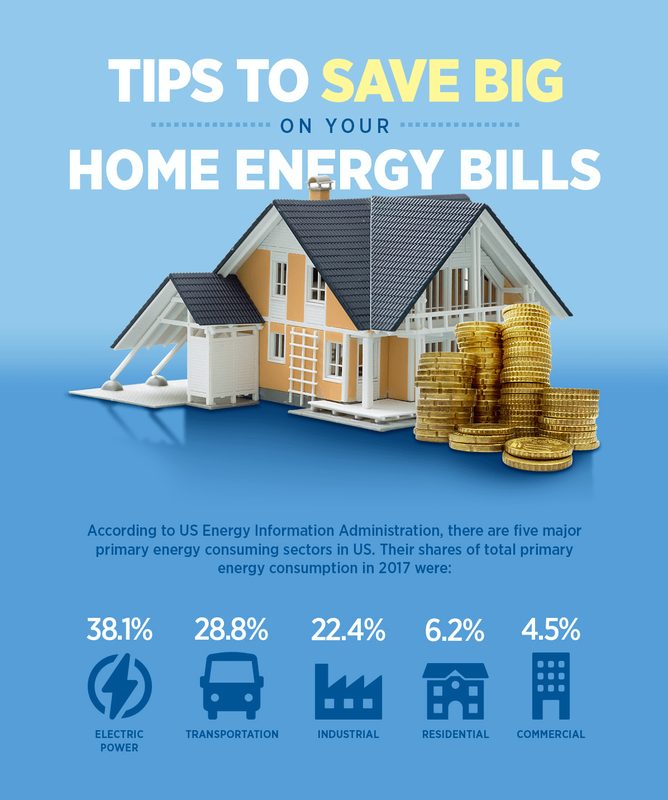
How to save money on your home energy bills
Part of owning a home is finding smart ways to stretch your dollar further than ever. Most homeowners actively seek to save money: they will call around for multiple quotes on that backyard remodeling project or look for ways to lower their home insurance rates. However, if you’re not working to make your home more energy-efficient, you could be leaving a lot of money on the table. Here’s our guide to just how much money you could be wasting—and how to keep more of that cash in your wallet.
Is your home using energy wisely?
If you’re like most Americans, you tend to think about being “energy smart” in ways defined by your actions. This includes turning off the lights before you leave the room, limiting your time spent showering, or watching how long you stand in front of the fridge with the doors open. However, home energy use is actually much more complex than this. To understand why, we need to look at where your energy dollar goes.
Where your energy dollar goes
As it turns out, the average American only spends 12% of their home’s energy on lighting. While not insignificant, that’s a relatively tiny figure compared to what you probably spend on cooling and heating. The average homeowner spends about 47% of their energy bills running their air conditioner, furnace or heat pump. Three major appliances—your water heater, washer, and dryer, make up the next 27% of your bill. Contrary to what your parents might have told you, holding the refrigerator door open for more than 5 seconds probably won’t cost you too much, relatively speaking: keeping your food cold only accounts for about 4% of your energy use.
Energy waste could be costing you
Energy waste is a major problem here in the United States. In fact, it’s estimated that homeowners waste 35% of all residential energy. Some of this waste is behavioral—again, think keeping the fridge door open too long—but most of it is actually structural. For example, a home with air ducts actually loses a great deal of cooled or heated air through cracks or pinholes in the ducts, meaning that your air conditioner or furnace has to burn more energy to get cooled or heated air to the living spaces of your home.
All of this inefficiency—which is generally more pronounced in older homes from the 60s and 70s than in newer builds—can add up to heftier energy bills.
Cutting down on your energy use—and your bills
Here’s the bottom-line: your home is probably inefficient and wasting energy. The good news is that you can change that. By scheduling a professional home energy audit and making some upgrades in your home, you can boost your energy-efficiency and put you and your family on the path to lower energy bills. Here’s where to start:
Schedule an energy audit
Every home is different. One home might be efficient in one area but inefficient in another, while the house next door might have very different issues that need to be addressed. This variability is one of the main reasons we recommend scheduling a home energy audit with a local contractor. In fact, many HVAC companies now offer energy audits as an easy, convenient way for homeowners to learn more about ways they can upgrade their home and ensure future savings.
A professional energy audit will provide you with a detailed checklist of areas you’ll need to address. For even more tips and ideas about what home upgrades will save you money check out this infographic from the team at ABC Cooling, Heating & Plumbing in Hayward, California.
Download the Energy Saving infographic

Tips to save big on your home energy bills - infograhic
About the Author
Lisa Davis is the HVAC senior content creator at ABC Cooling, Heating and Plumbing, a professional HVAC service company located in Hayward, CA. Lisa has a Bachelor’s degree in Construction Management and has been working within the home services industry for more than 10 years.
